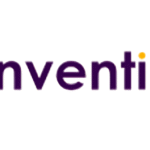Bridging the Gap Between Education and Employment: Practical Solutions for a Job-Ready Workforce

With the world evolving at an unprecedented pace, the disconnect between education and employment is a growing concern. Industry demands are changing rapidly, while most educational institutions struggle to equip students with the necessary skills. This has created a widening gap between education and employability. As India transitions into a knowledge economy with increasing technological integration, the emerging disparities at the tertiary education level pose a significant challenge.
To ensure students are well-prepared for the workforce, educational institutions must adapt and effectively prepare students for their careers. Here’s how to enhance the alignment between academic learning and job readiness:
1. Revamping the Recruitment Process: Educational institutions should re-evaluate their student recruitment processes. Currently, many programs heavily rely on traditional academic achievements like 10+2 scores, without assessing students’ suitability for specific careers. Introducing industry representatives into interview or selection panels can help identify candidates with the right blend of academic excellence and career-relevant traits and interests.
Moreover, entrance exams should be restructured to assess real-world skills and potential rather than solely validating high school performance. This approach would identify students genuinely suited for their chosen fields, not just those who excel in academic tests. According to the ILO, a simple average across G20 countries with available data revealed that 46% had educational attainment levels mismatched with job requirements. India’s mismatch is alarmingly high at 60.5%.
2. Enhancing Career Counseling: Effective counseling is essential for managing expectations and reducing dropout rates. Students need a clear understanding of industry demands, including working hours, career opportunities,growth prospects, and challenges. Providing detailed and realistic career information during counseling sessions can help students make informed decisions and minimize the chances of dropping out due to unforeseen challenges.
3. Strengthening Entry Barriers: Educational institutions should establish stronger entry barriers to attract genuinely interested students. This prevents institutions from becoming default options for those uncertain about their career paths. Implementing rigorous selection criteria maintains high standards and fosters a committed student body.
Example: Implementing aptitude tests aligned with program/industry requirements, or requiring relevant work experience or volunteer activities.
4. Enhancing Industry Engagement: Integrating in-class learning with practical industry experience is crucial.Internships, work-study programs, and on-the-job training can provide students with valuable real-world exposure.Encouraging faculty to gain industry experience aligns teaching with current practices. Collaborations with industry partners committed to training and development create robust career pathways.
Additionally, involving industry practitioners through initiatives like the ‘Professor of Practice’ program brings real-world insights into the classroom.
5. Redesigning the Curriculum: A transformative curriculum overhaul is needed to align with industry requirements.Questioning the relevance of existing content and focusing on practical applications is essential. Dynamic and flexible curricula that evolve with industry changes are crucial. Stackable modules offering focused, applied learning with academic credits are a step in the right direction.
Example: Developing project-based learning modules that simulate real-world challenges.
6. Embracing Innovative Pedagogy: Adopting innovative teaching methods like problem-based learning, case studies, and simulations fosters active learning and critical thinking.
Bridging the gap between education and employment requires a multifaceted approach. By revamping recruitment,enhancing counseling, fostering industry engagement, redesigning curricula, and embracing innovative pedagogy,educational institutions can better prepare students for successful careers.
Author: Prof. Sandeep Munjal, Director, Vedatya Institute
Disclaimer: The views expressed in this article are solely those of the author and do not necessarily reflect the opinions or policies of ObserveNow Media. The author is solely responsible for ensuring the accuracy, completeness, and validity of the information presented, encouraging readers to independently verify and seek professional advice if needed.
















